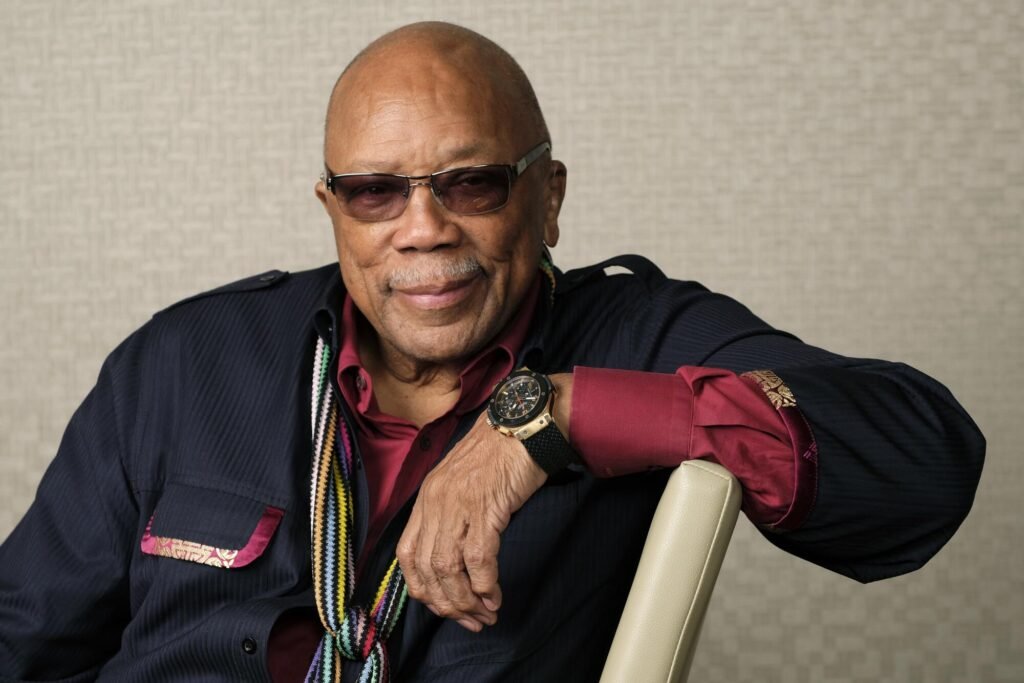In 1974, legendary musician Quincy Jones faced a life-threatening brain aneurysm that put him at death’s door.
His odds of survival were so low, and his influence so profound, that his friends began planning a tribute concert in his honor.
At just 41, Jones had already become a towering figure in American music—as a performer, arranger, songwriter, producer, soundtrack composer, and record executive.
Starting in the jazz clubs of the 1950s, Jones went on to master a wide range of styles, including soul, swing, and pop.
He produced hit records for artists like Dinah Washington, Frank Sinatra, and Lesley Gore, even landing in the top 10 with his own music.
With his life seemingly ending, some of the biggest entertainers in America—who would have performed at his memorial—came together. Remarkably, Jones survived, and the tribute concert went on as planned.
Jones attended with his neurologist, who advised him to stay calm.
“That was hard to do with Richard Pryor, Marvin Gaye, Sarah Vaughan, and Sidney Poitier singing your praises,” he told Newsweek in 2008.
Jones’ survival proved to be only the beginning of more groundbreaking achievements.
He would go on to forge an iconic partnership with Michael Jackson, produce the mega-hit “We Are the World” in 1985, and create unforgettable tracks for Chaka Khan, Donna Summer, and many other stars.
His influence touched nearly every genre in American music, including hip-hop.
Jones’ resilience had been honed since childhood.
Growing up in Depression-era Chicago, he faced hardship early—his mother was institutionalized when he was seven, and his father worked as a carpenter for the infamous Jones Boys gang.
Young Quincy once dreamed of becoming a gangster himself, inspired by what he saw around him.
He and his brother survived as “street rats,” with Jones enduring dangerous run-ins, including a brutal incident where a rival gang member nailed his hand to a fence.
A turning point came when his family moved to Washington state. During a break-in at a community center with friends, he stumbled upon a piano.
“I touched it, and every cell in my body said, this is what you’ll do for the rest of your life,” he recalled in a 2016 interview with BBC Radio 4. That discovery, he later said, “saved my life.”
From that moment, Jones immersed himself in music.
He picked up instruments at school, eventually settling on the trumpet, and began performing in nightclubs.
At age 14, he met a then-unknown Ray Charles, who would become a lifelong collaborator, and even played alongside Billie Holiday.
Mentored by jazz greats like Count Basie and Clark Terry, Jones quickly gained recognition. He joined Dizzy Gillespie’s band and played on Elvis Presley’s first TV appearance.
After discovering his gift for arranging music while touring with Lionel Hampton’s band, Jones became highly sought-after for his arrangements.
Yet, a costly European tour left him in debt, prompting him to take a job with Mercury Records in 1961.
He became the first Black vice-president of a major record label, producing Lesley Gore’s hit “It’s My Party” and releasing the now-iconic “Soul Bossa Nova.”
This track would become a cultural staple, featuring in film soundtracks, including Austin Powers.
Jones also struck up a creative partnership with Frank Sinatra, arranging and conducting two of Sinatra’s albums in the 1960s.
The two formed a close bond, with Sinatra referring to him as “one of the finest musicians I’ve ever known.”
Outside the studio, they shared unforgettable moments—“Seven double Jack Daniels in an hour… [Sinatra] invented partying,” Jones once said.
Throughout his career, Jones collaborated with music legends like Aretha Franklin, Louis Armstrong, and Sammy Davis Jr., with his own album Body Heat landing in the U.S. top 10.
Despite incredible hardships, he remained a musical giant, his life and work leaving an indelible legacy in American popular music.
Also read: Jill Duggar Shares Update On “Complicated” Relationship With Parents
